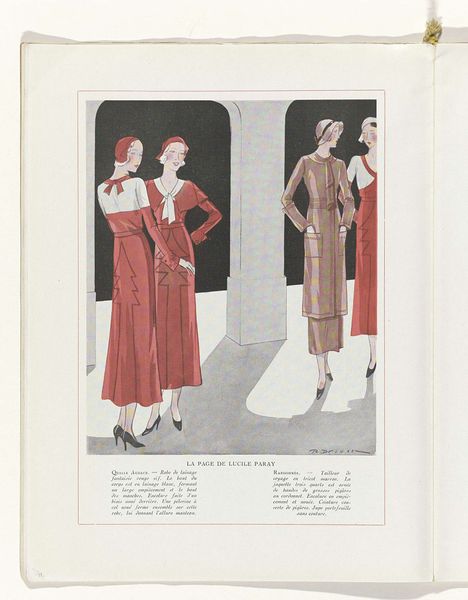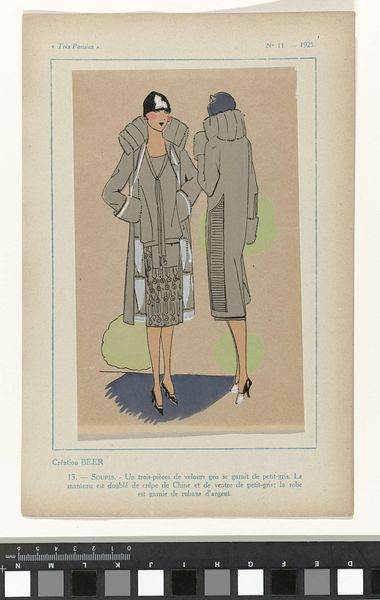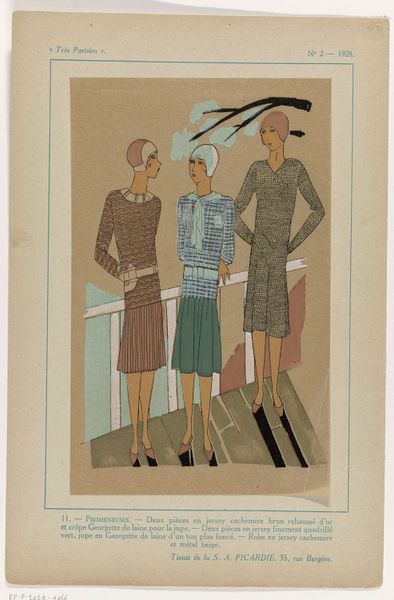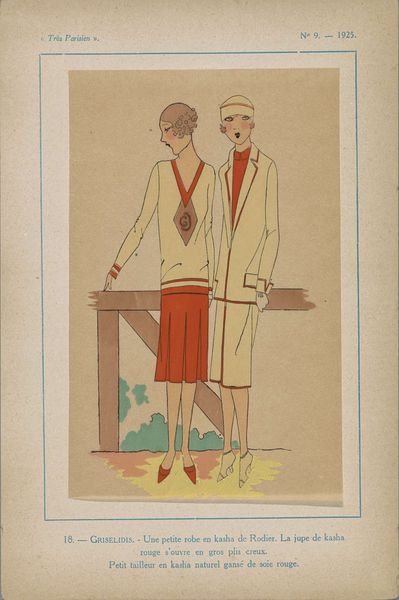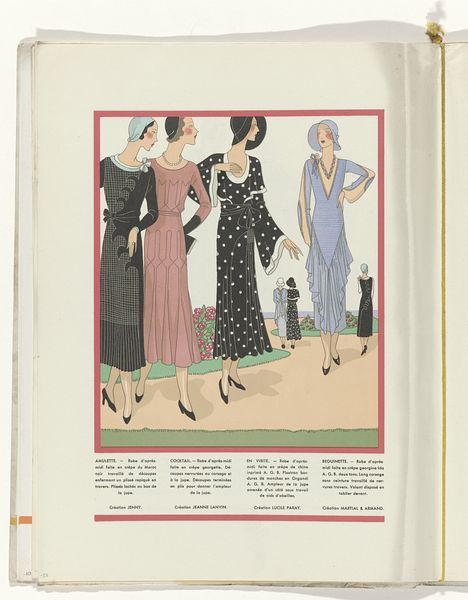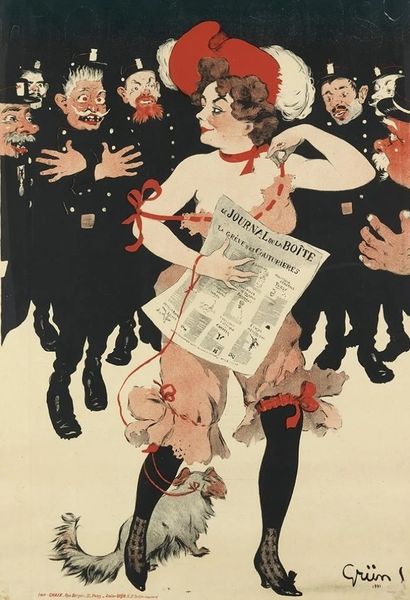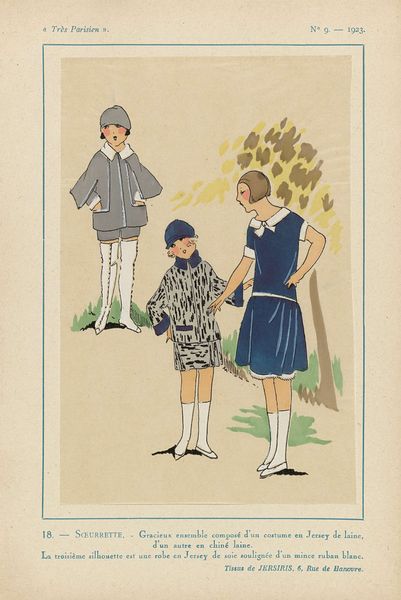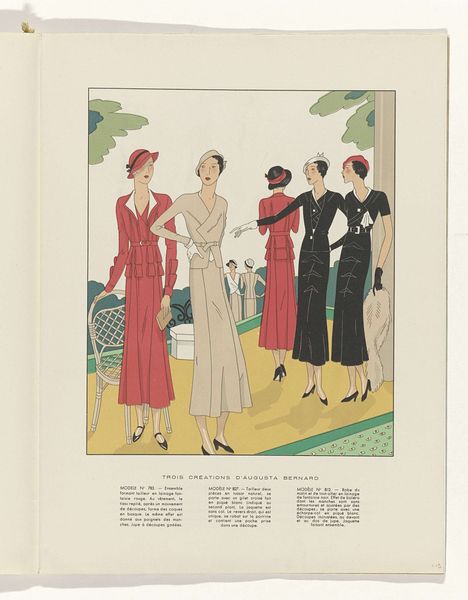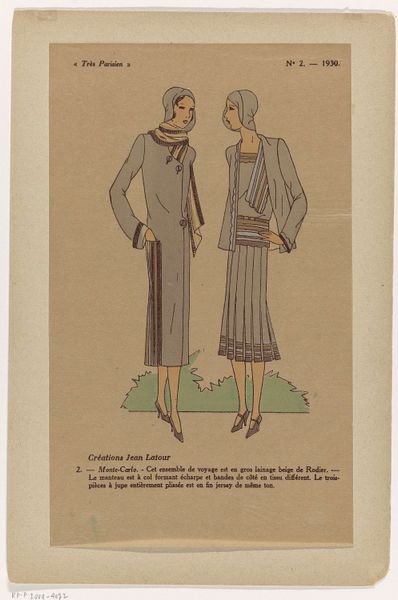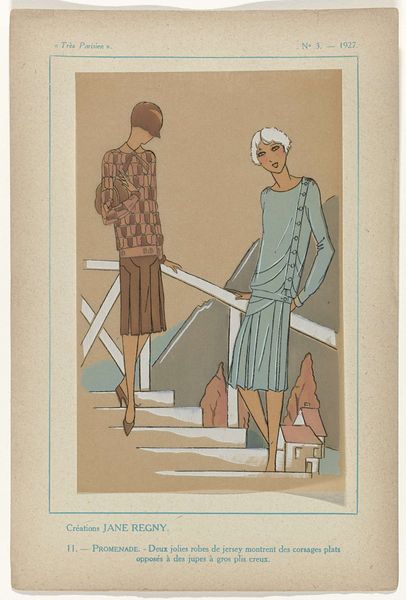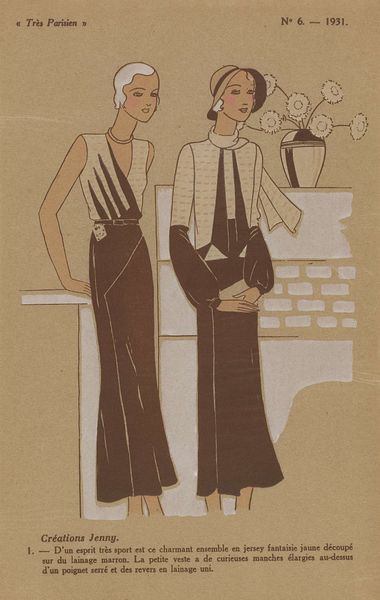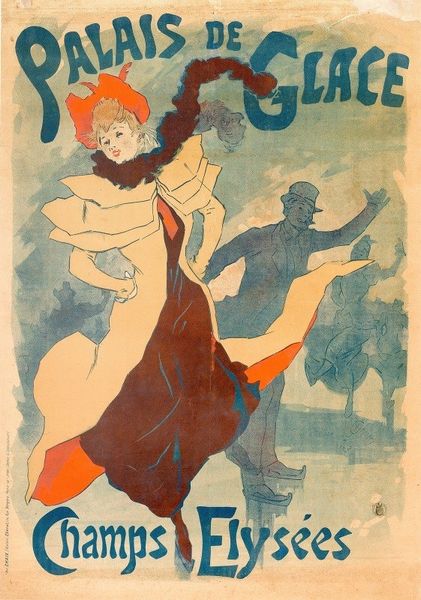
Bandontwerp voor: Henriëtte Dietz e.a., Voor onze kleintjes: geïllustreerde vertellingen om voor te lezen en zelf te lezen voor kinderen van 5-8 jaar, c. 1928 c. 1928
0:00
0:00
Dimensions: height 238 mm, width 224 mm
Copyright: Rijks Museum: Open Domain
Curator: Welcome. Before us is the cover design, "Voor onze kleintjes," or "For Our Little Ones," created circa 1928 by Miep de Feijter. It appears to be cover art intended for a children’s book. Editor: It’s rather striking, isn’t it? The flat planes of color and simplified figures almost feel like a stage set. There's something inherently optimistic about the image, despite the slightly severe geometries. Curator: The use of flat colour, bold lettering, and geometric stylization suggests an Art Deco or early Modernist aesthetic. Consider the materiality. This graphic art form, intended for mass production as a book cover, aimed for accessibility, differentiating itself from high art through affordability. The labor invested in creating accessible educational material is equally noteworthy. Editor: I agree. Notice the visual interplay of the shapes: the rhythmic repetition of the polka dots on the girl's dress echoes the checkered pattern on the boy’s shirt. There’s a lovely tension created by the dark and light contrasts, effectively framing the children. The composition is deceptively simple but elegantly balanced. Curator: That dark background does more than just provide contrast. It speaks to the economic realities and the intended audience. Printed matter such as books were growing in importance in early childhood education and shaping consumer behavior for children. This image aimed to sell, and create a recognizable visual for the publisher. Editor: It does feel overtly commercial. But within that, the gesture of the children holding hands is touching and poignant. They stride confidently forward; their bodies echo each other. This is subtly emphasized with visual rhythm and shape—triangles—evident in their legs, the roofline of the typeface at the top, and again, subtly, in their briefcases. This could speak of childhood security, friendship, and growth as symbolic undertones. Curator: Exactly, it invites a larger discussion about the book industry at the time and the value given to labor in educational production. Editor: Indeed, quite a compelling snapshot of a specific time and purpose. I leave with an admiration for its design economy. Curator: It really invites us to reconsider who and what constitutes artistic production and value, doesn't it?
Comments
No comments
Be the first to comment and join the conversation on the ultimate creative platform.
